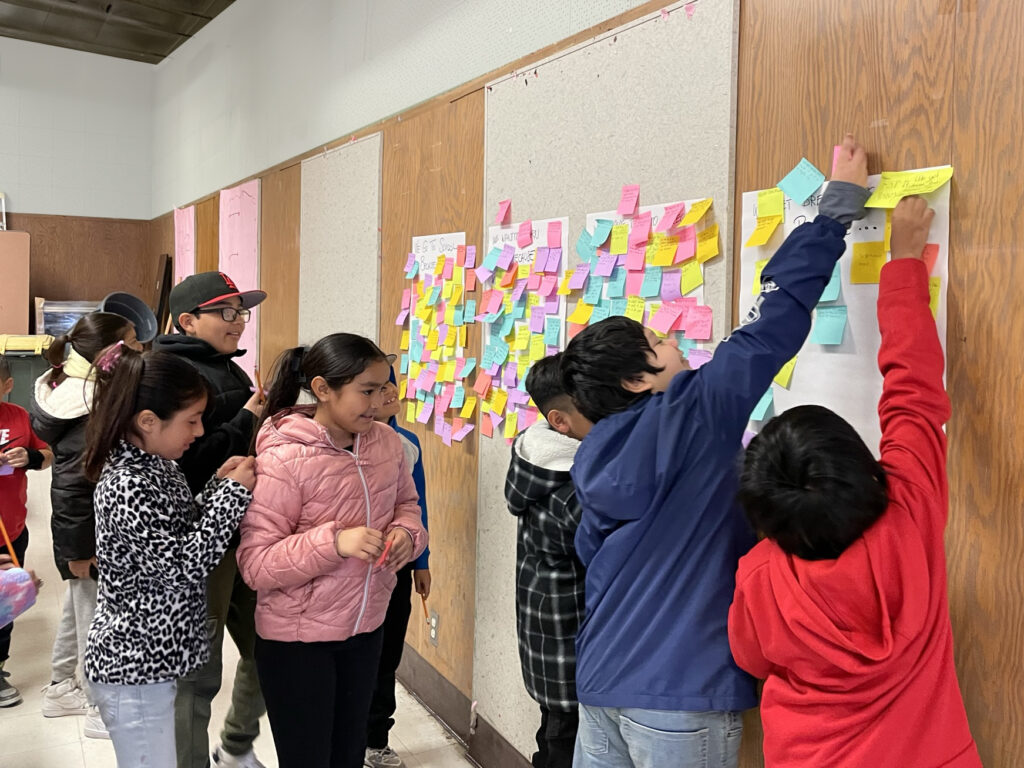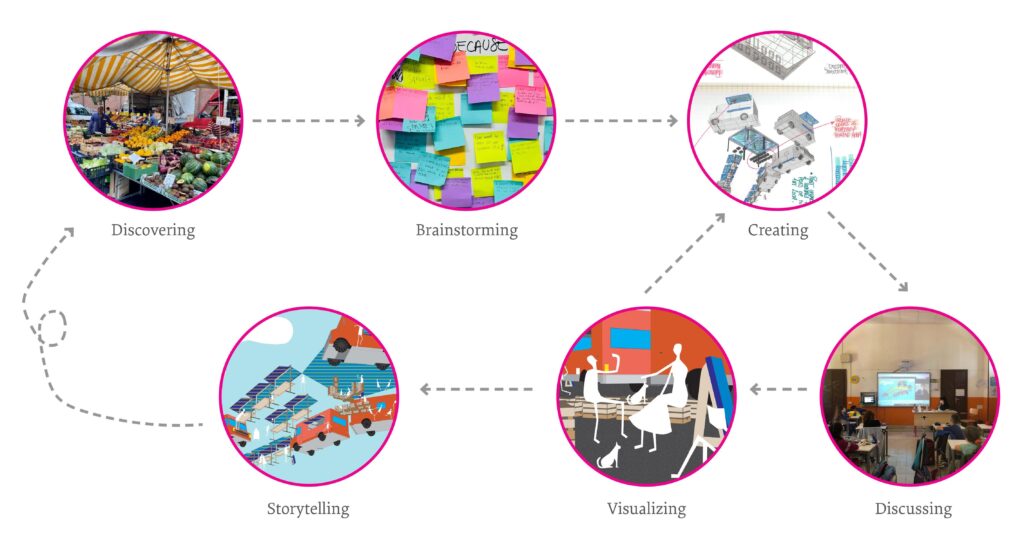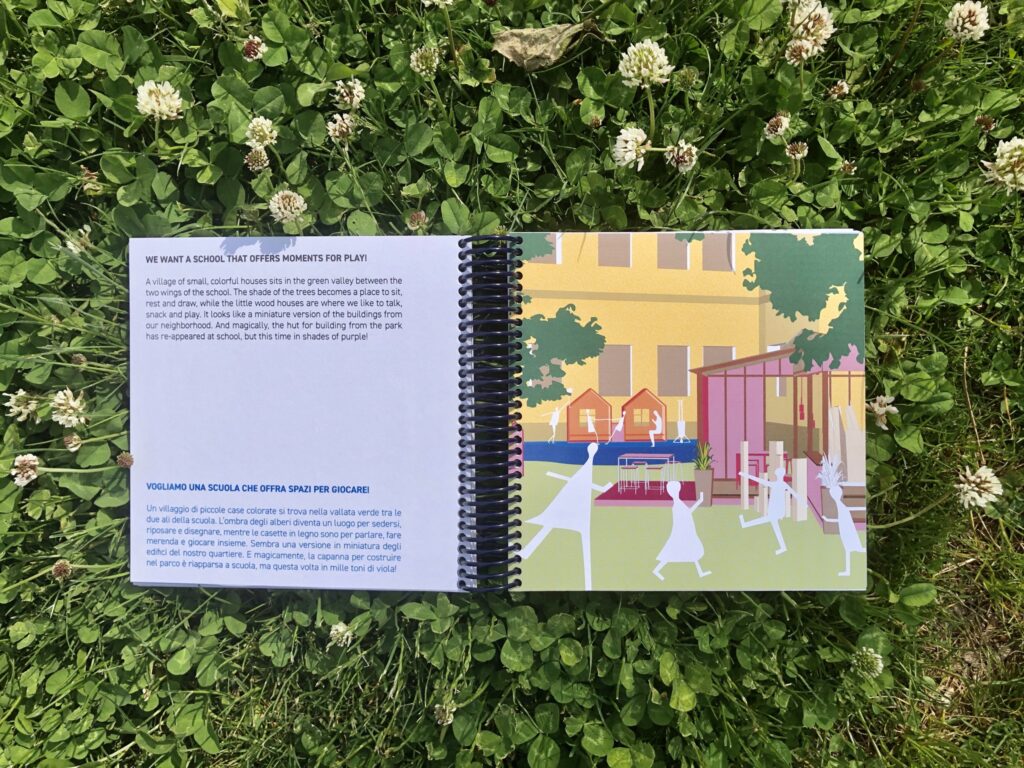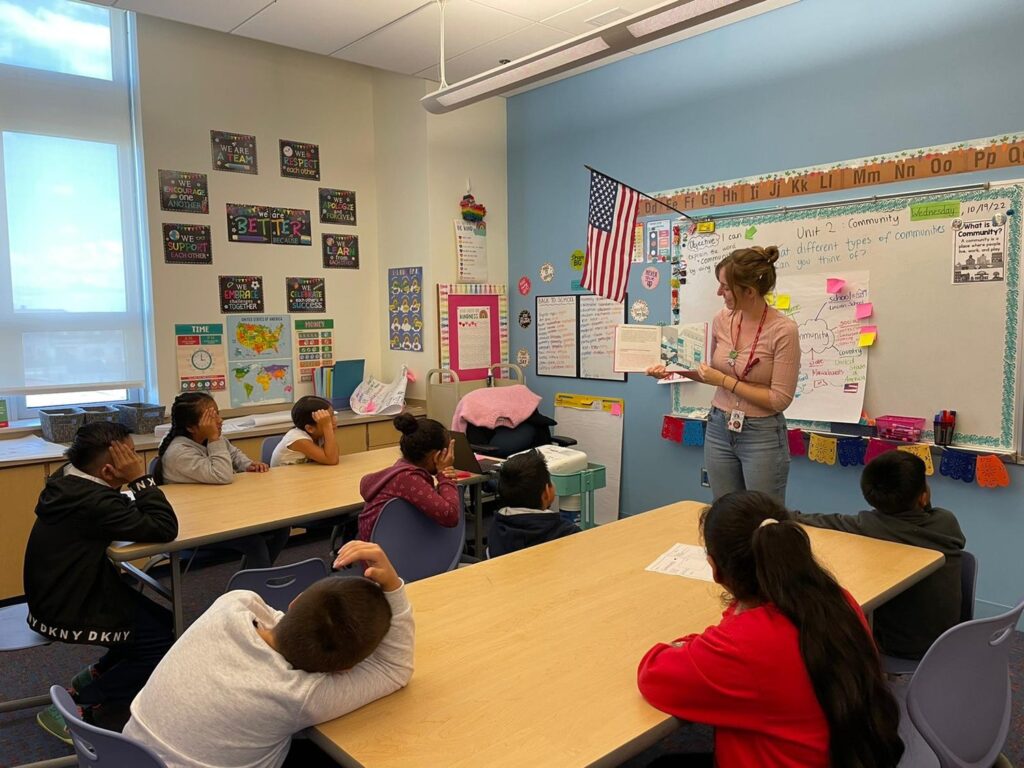
As an architectural designer committed to fostering equitable learning opportunities for all, I’ve witnessed firsthand the transformative power of involving students in the conceptualization and design of their learning environments, especially within high-risk and low-income communities. In these educational landscapes, where resources might be scarce and challenges abundant, “school” is way more than just a place for learning: it feeds, clothes, supports, and cares for students, ensuring they can succeed in life.
Designing “With” Instead of “For”:
The challenges that students experience often include insufficient resources, outdated facilities and socio-economic barriers that impact students’ ability to fully engage in their education. However, amidst these hurdles lies a profound opportunity to reshape the educational narrative these students experience by capitalizing on the power of agency-driven design. The notion of empowering students to actively shape their own learning spaces holds unparalleled significance and fosters a shared sense of caring and belonging that uplifts them and their lived experiences.
Empowering students to design their own learning environments through agency-driven design processes is a transformative approach that can help positively shift what is happening within more traditional educational landscapes. By centering on student agency, this methodology acknowledges students as active contributors to their educational journey, fostering a sense of ownership and responsibility of where, when, what and how students learn. Through authentic collaboration and meaningful engagement, students are not just passive inhabitants but co-creators of their learning environments.
This approach values their diverse perspectives, cultural backgrounds, and individual needs, providing them with a platform to voice their ideas and preferences. By integrating students’ input into the design process, educational spaces better reflect their aspirations, enabling a sense of belonging, motivation, and empowerment essential for fostering holistic and meaningful learning experiences. Ultimately, agency-driven design processes instill in students a profound sense of pride and commitment to their education, nurturing a lifelong passion for learning.

Promoting Student Agency in Design
At the core of this transformative approach to designing is the concept of agency. It involves recognizing students not as passive recipients of education but as active participants and co-creators of their learning experiences. By involving students in the design of their learning spaces, we empower them to take ownership of their education, fostering a sense of belonging and motivation. However, it is important to note that engaging students goes beyond tokenism or a lip service approach; it’s about valuing their perspectives, transparently integrating their ideas into the decision-making process, and giving them a genuine stake in co-creating learning environments that resonate with their needs, aspirations, and cultural identities.
The impact of actively engaging students in the design of their learning environments is profound. Research consistently demonstrates that student-centered designs lead to increased engagement, higher motivation, and improved academic performance. Moreover, it fosters a sense of ownership and empowerment among students, positively impacting their social and emotional well-being. Additionally, these practices cultivate essential 21st-century skills such as critical thinking, problem-solving, collaboration, and adaptability — skills that are crucial for success in a rapidly evolving global landscape.
“We Want A School!” Agency In Action
During my time as an architecture student at the Rhode Island School of Design, I co-authored a children’s book with a multiethnic 5th grade class from a Milanese school titled “We Want a School! Vogliamo una scuola!” In this book, which was developed using a rigorous and engaging student-agency driven approach (nicknamed “Design Doing” instead of “Design Thinking” by the students themselves,) students were able to materialize their desire to collaborate and produce a collective document capable of expressing their idea of what spaces for learning should be like.

Students described an inclusive school, where multiple ways of learning and communicating co-exist, which involves parents as competent co-authors of their educational journey, which is a civil protagonist in the social and environmental justice, which uses space and time as newfound educators and not as limits to one’s learning. This is the “utopia” in which the children from this 5th grade class wanted to participate in, not as a dream, but rather as a feasible project for the children who will come to be a part of their school after them.
While students were developing their ideas for the environments in which they wanted to learn, they repeatedly voiced the importance of an educational environment that transcended the physical walls of a classroom. While this design directive may have been interpreted as overwhelming and unfeasible by many, all 23 students collaborated to produce a thoughtful, muti-faceted proposal that bridged pedagogy and architecture. Students collectively identified five locations within their school’s neighborhood that held significance to them.
To build an agency-driven future for our learners, let us embrace the transformative potential of student engagement in shaping educational environments.
After engaging in this process, they were asked to identify and describe how these could supplement the instructional value offered by their current curriculum. They took me on a virtual tour of their school’s neighborhood, explaining and physically demonstrating how they could practice their math skills at the outdoor market, learn fun new words at the paint store, sing and dance with the grownups in the courtyard of a nearby residential building, build furniture and toys at a public park, and finally dream, imagine, and act out their favorite stories on the stage of a seasonal outdoor cinema.

When asked how these spaces could be enhanced by architectural interventions to support learning, they explained that the spaces themselves worked just fine as is — they just needed a mark of sorts to indicate their intrinsic connection to children, their place in the world, and their desire to learn. The idea of making a mark on these spaces was interpreted using the architectural tool of the supergraphic, which the children wholeheartedly embraced and conceptualized for all locations.
Supergraphics in architecture refer to large-scale graphic designs or patterns applied to walls, ceilings, floors, or other surfaces within a built environment. These graphics are not merely decorative; they serve multiple purposes and play a significant role in architectural design and user experience. Students thoughtfully described the value of these interventions as a way for public, adult-centered spaces to act as a provocation that would make their learning process more visible and meaningful in the eyes of those who often overlook it — a call to action of sorts.
As the students stated at the end of the book: “Well that was a journey: learning galore! Grown ups pay attention: you now have the floor. Listen to children: we know what we need it may be a challenge, but trust us to lead. We need to be able to learn everywhere: schools are our future, please act up and care.”

Best Practices And Final Thoughts
Implementing agency-driven design practices may pose significant challenges such as limited resources, logistical constraints, and resistance to change and consensus building. However, these obstacles can be navigated through innovative problem-solving, strategic partnerships, and advocacy efforts that prioritize student voices in shaping educational spaces. Most importantly, identifying best practices for co-design processes is fundamental to ensure the success of projects. I have compiled the following list of best practices which I have found to be essential and effective when co-authoring educational landscapes with students and their communities:
- Engage in Authentic Collaboration: Establish platforms for authentic collaboration. Regularly convene focus groups or workshops where students can openly share their thoughts, preferences, and concerns about their learning spaces. Ensure their feedback is genuinely considered in the design process, and documented for others to reference.
- Leverage Multidisciplinary Partnerships: Foster partnerships between students, educators, architects, and community stakeholders. This collaboration ensures a diverse range of perspectives are considered, leading to more comprehensive and inclusive designs.
- Always Consider Flexible and Adaptive Spaces: Design learning environments that are flexible and adaptable. Incorporate movable furniture, multipurpose areas, and technology infrastructure that can accommodate various teaching methods and evolving educational needs.
- Actively Practice Cultural Sensitivity and Inclusivity: Acknowledge and celebrate cultural diversity within the school community. Design spaces that honor different cultural backgrounds, beliefs, and traditions to create inclusive and welcoming environments for all students.
- Emphasize Sustainability and Resourcefulness: Promote sustainability in design practices. Engage students in initiatives that prioritize eco-friendly solutions, encouraging responsible use of resources and environmental stewardship.
- Be Ethical and Responsive to Student Ages: Remember that just like adults, children have the right to engage and disengage in all kinds of situations, and that their contributions are not owed, but rather fostered. Ensure that activities and sessions are designed to respond to the ages of those attending, and their developmental milestones to facilitate information gathering and boost participation.
Empowering students to actively participate in designing their learning environments transcends being a mere educational strategy; it’s a paradigm shift in how we perceive education. By honoring and embracing their agency, we not only create inclusive and effective learning spaces but also instill in students a sense of empowerment, resilience, and an enduring passion for learning.
To build an agency-driven future for our learners, let us embrace the transformative potential of student engagement in shaping educational environments. Let us commit to co-creating spaces where every student feels valued, heard, and empowered — a testament to the belief that education is not just about knowledge acquisition but about nurturing individuals who can thrive in a diverse and ever-changing world.

